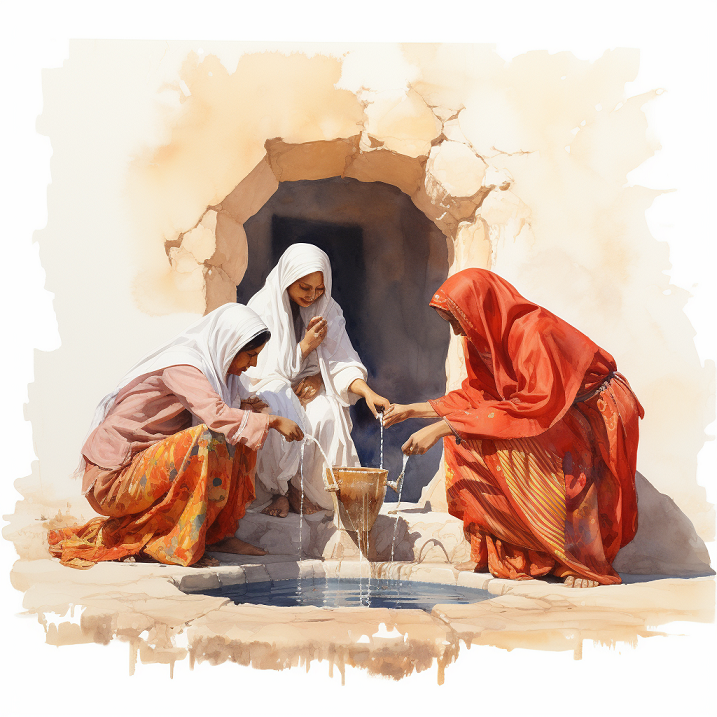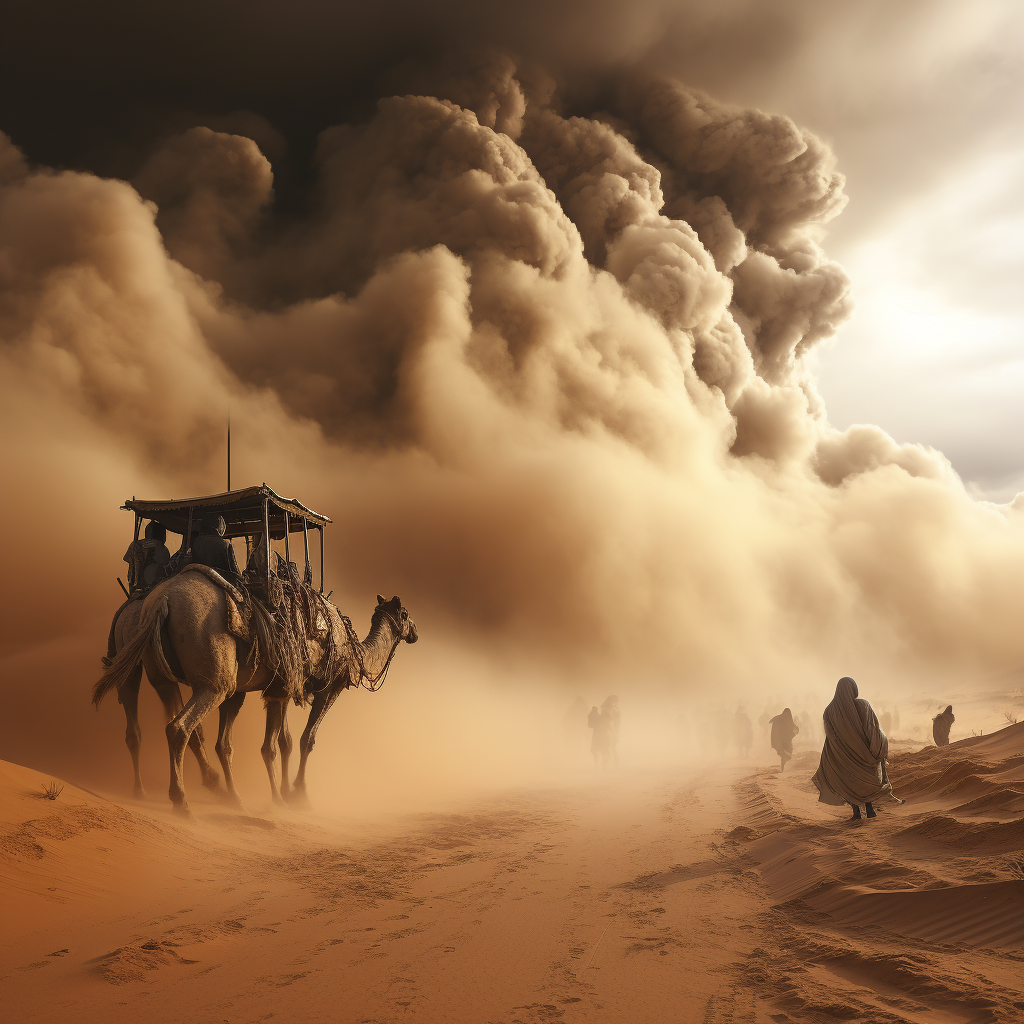In the 19th century, John Keane, an Englishman who lived in Arabia disguised as a Muslim, embarked on an epic pilgrimage from Mecca to Medina. His experiences, vividly documented in his book “My Journey to Medina,” offer readers a unique insight into the challenges and wonders of the Arabian landscape. In this essay, we will delve into a segment of Keane’s return journey from Medina, a beautiful city that served as a pivotal point in his pilgrimage. As we explore the anticipation of challenges in the desert, Keane’s meticulous observations will guide us through the landscapes, encounters, and trials that marked his compelling narrative.
The Desert Journey
John Keane’s return journey unfolded on the back of camels, a mode of transportation that became more enjoyable than he had anticipated. As he traversed the desert expanse, Keane encountered a troop of Turkish cavalry exercising their hourses, adding a dynamic element to his narrative. The Turkish soldiers, engaged in skillful spear throwing, showcased their prowess, creating a spectacle that broke the monotony of the long desert trek.
Diverse Landscapes
Keane’s journey through the desert revealed a tapestry of landscapes, ranging from hills to meadows. The low hills, adorned with dark-green verdure, provided a picturesque backdrop, offering a stark contrast to the barrenness often associated with desert terrains. As the caravan navigated the valleys between these hills, they stumbled upon fresh green meadows, a surprising oasis in the arid landscape. Amidst this diverse scenery, Keane’s encounters with Bedawi nomads added a human dimension to the journey, bringing to life the nomadic culture that thrived in the vast expanses of the Arabian desert.
The hills around were low, and clothed with dark-green verdure, and the valleys between were fresh green meadows, dotted over with grazing camels and flocks of sheep
John Keane: My Journey To Medina
Rebeccas At The Well
In the tranquility that followed the desert journey, John Keane found solace close to a deserted well, seeking refuge from the bustling camp under the cool shadow of its low wall. There, with his trusty gun and a few birds in tow, he contemplated the serenity of the afternoon, removed from the clamor of the camp’s insect pests and noxious exhalations. The scene took an unexpected turn when two young Bedawi girls emerged from a nearby hut, their earthenware water vessels in hand. Unveiled and adorned in dark-blue, intricately embroidered “cutty-sarks,” the girls exuded an unembarrassed charm that captured Keane’s admiration.

His contemplation shifted to a whimsical desire to recreate a classic “Rebekah at the Well” moment with these young sisters. The exchange, however, turned from the solemn to the playful as the girls jovially demanded “bakshish” – a token of appreciation. In a mischievous twist, Keane playfully doused them with water, turning the encounter into a lively, laughter-filled escapade. This interlude, though marked by a hint of rudeness, became a memorable and humanizing episode amid the arduous desert journey, providing a brief respite for both the pilgrim and the unsuspecting Bedawi maidens.
The Gold Storm
As John Keane’s desert journey continued, it took an unexpected turn when he found himself amidst a formidable sandstorm. Keane vividly describes this natural phenomenon as a “gold storm,” attributing its name to the presence of shimmering mica in the air. The mica, reflecting the sunlight, transformed the atmosphere into a spectacle akin to a storm of gold. However, the beauty of this visual phenomenon concealed the challenges that accompanied it.
The sandstorm intensified, becoming a force of nature that tested the resilience of Keane and his fellow travellers. The wind howled over the rugged rocks, carrying with it fine particles of sand and dust. The storm, characterised by a yellow haze, presented unforeseen difficulties, including pricking sand and the unexpected occurrence of locusts being whisked away by the gale.
Seeking Shelter in a Village
In the face of the escalating sandstorm, Keane and his companions sought refuge in a nearby village. The severity of the storm became apparent as they observed damaged huts, their structures compromised by the force of the wind and the weight of accumulated sand. Tensions among the group members heightened, fueled by the adverse conditions and the uncertain nature of the desert environment.
Within the shelter of the village huts, discussions unfolded, revealing concerns and suspicions among the travellers. The damaged huts not only signalled the physical impact of the storm but also contributed to a sense of unease and mistrust within the group. As they grappled with the potential dangers surrounding them, there emerged a palpable distrust of the Bedawi, further complicating the already challenging circumstances.
I took one of the guns and a few cartridges and strolled out for a little walk, to pick up a few pigeons, or perhaps something better. The soldiers camped so near made the place safe from any large band of wandering marauders, and, with the gun in hand, I would not at all have objected to dropping upon a couple of murderously-inclined gentlemen…Since they only regarded me as legitimate sport, I would as soon bag a brace of Bedawi as a brace of partridges
John Keane : My Journey To Medina
Aftermath of the Storm
Following the tumultuous “gold storm,” the caravan faced the immediate challenge of assessing its safety and well-being. Shaykh Bo’sen, a key figure in the journey, took on the responsibility of providing crucial updates on the condition of the caravan. His role became pivotal in ensuring the group’s survival amidst the unpredictable desert environment.
The aftermath of the sandstorm revealed the grim toll it had taken on the travellers. Keane recounts the sombre reality of two men losing their lives, a poignant reminder of the inherent dangers that accompany desert expeditions. Additionally, a woman who had suffered a broken arm during the storm eventually succumbed to her injuries, marking a tragic loss within the group. The discovery of lost camels further underscored the challenges faced by the caravan, requiring immediate action to mitigate the impact.
Dealing with Aftermath
In the wake of the storm’s devastation, the survivors faced the daunting task of dealing with the aftermath. Cleaning and restoring belongings became a priority as the fine dust and grit had permeated every facet of their possessions. The resilience of the travellers shone through as they undertook the arduous process of shaking off the remnants of the storm and restoring a semblance of order to their camp. With a collective determination to overcome the setbacks, the caravan prepared to resume its journey, recognizing that the desert, with all its hardships, demanded a tenacious spirit to navigate its challenges.
In the face of adversity, John Keane and his fellow travellers exhibited a remarkable resilience that defined their desert odyssey. The challenges presented by the “gold storm” did not break their collective spirit; instead, it fueled a determination to endure and press forward. This resilience became a testament to the unwavering commitment to complete the pilgrimage, despite the harsh conditions that sought to impede their progress.
Impact of the Sandstorm on Clothing and Tents
The sandstorm, with its relentless force, wreaked havoc on the belongings of the caravan. Clothing and tents bore the brunt of the storm, becoming laden with fine dust and grit. The impact was not merely physical; it was a tangible reminder of the unpredictable nature of the desert and the fragility of the tools essential for survival.
The aftermath presented the travellers with the arduous task of dealing with the pervasive fine dust that had penetrated every crevice of their belongings. Cleaning became more than a practical necessity; it evolved into a symbolic act of resilience and restoration. The challenges in ridding their possessions of the stubborn dust mirrored the broader struggles inherent in the pilgrimage, requiring patience, determination, and an unwavering commitment to overcoming obstacles.
The desert, with its vast expanses and unpredictable weather, emerges as both a captivating backdrop and a formidable adversary in Keane’s account. The resilience of the travellers stands out as a defining characteristic, an unwavering force that propels them forward in the face of adversity. The challenges, whether presented by the elements or the intricate dynamics within the group, serve as crucibles that test and refine the pilgrims’ resolve.
.

